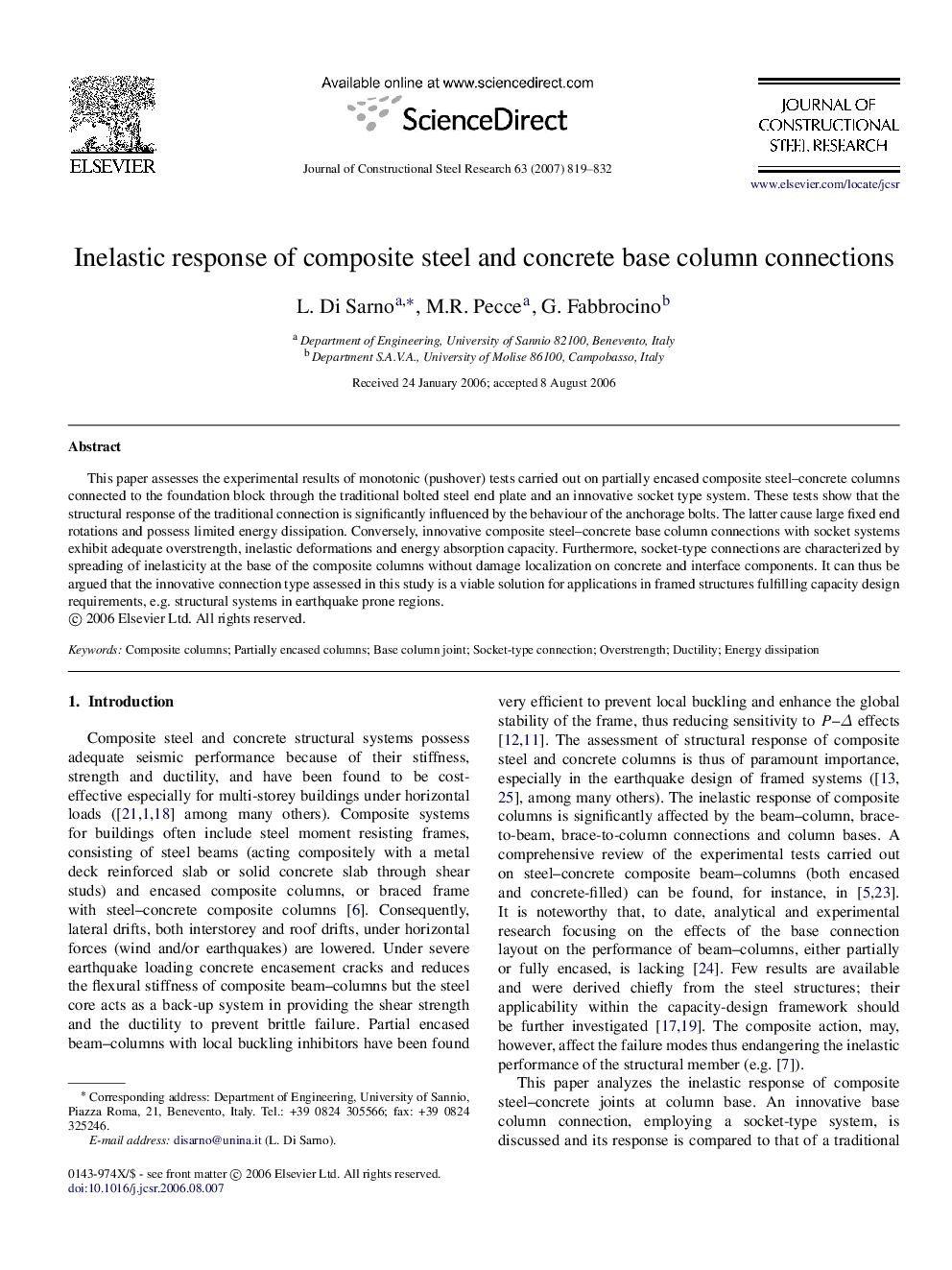| Article ID | Journal | Published Year | Pages | File Type |
|---|---|---|---|---|
| 286079 | Journal of Constructional Steel Research | 2007 | 14 Pages |
This paper assesses the experimental results of monotonic (pushover) tests carried out on partially encased composite steel–concrete columns connected to the foundation block through the traditional bolted steel end plate and an innovative socket type system. These tests show that the structural response of the traditional connection is significantly influenced by the behaviour of the anchorage bolts. The latter cause large fixed end rotations and possess limited energy dissipation. Conversely, innovative composite steel–concrete base column connections with socket systems exhibit adequate overstrength, inelastic deformations and energy absorption capacity. Furthermore, socket-type connections are characterized by spreading of inelasticity at the base of the composite columns without damage localization on concrete and interface components. It can thus be argued that the innovative connection type assessed in this study is a viable solution for applications in framed structures fulfilling capacity design requirements, e.g. structural systems in earthquake prone regions.
